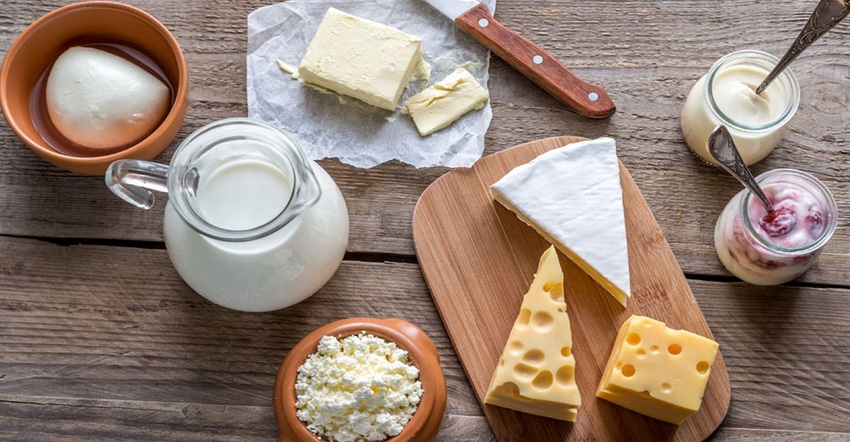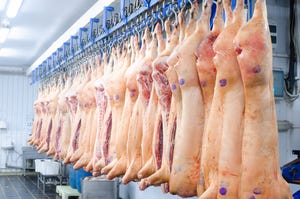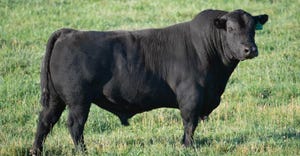FAO Food Price Index retreats slightly in April
Ukrainian farmers defy expectations, mounting a stubborn planting program.

The FAO Food Price Index (FFPI) averaged 158.5 points in April 2022, down 1.2 points (0.8%) from the all-time high reached in March, though still 36.4 points (29.8%) above its value in the corresponding month last year. The drop in the FFPI in April was led by a significant downturn in the vegetable oil sub-index, along with a slight decline in the cereal price sub-index. Meanwhile, sugar, meat and dairy price sub-indices sustained moderate increases.
The Meat Price Index averaged 121.9 points in April, up 2.7 points (2.2%) from March and setting a new record high. The continued price strength stemmed from higher world poultry, pig and bovine meat prices. The poultry meat price increase was driven by solid demand amidst tight global supplies, reflecting disruptions to exports from Ukraine and rising avian influenza outbreaks in the Northern hemisphere. Meanwhile, pig meat prices rose further, although less steeply than in March, on the prolonged low supply of slaughter pigs in Western Europe and high internal demand in large producing countries. World bovine meat prices increased moderately, reflecting high export volumes from Brazil, despite the low slaughter cattle supply. With this increase, bovine meat prices reached a new record high.
FAO’s Dairy Price Index averaged 147.1 points in April, up 1.3 points (0.9%) from March, marking the eighth consecutive monthly increase and lifting the index 28.0 points (23.5%) above its value a year ago.
“In April, the upward trend of dairy product prices continued, driven by the persistent global supply tightness, as milk output in Western Europe and Oceania continued to track below their seasonal levels,” the organization reported. “International quotations for butter rose the most, reflecting tight supplies, including low inventories, especially in Western Europe, amidst a surge in demand for near-term deliveries, partly induced by the current shortage of sunflower oil and margarine.”
Despite a decline in foreign purchases, the FAO said sustained internal demand and low inventories in Europe provided support to world skim milk powder and cheese prices. By contrast, whole milk prices fell moderately, mainly due to a demand slowdown in China.
The FAO Cereal Price Index averaged 169.5 points in April, down 0.7 points (0.4%) from the record high reached in March (since 1990). After surging to a record level in March, international coarse grain prices dropped by 1.8% in April, led by a 3.0% decline in maize prices, as seasonal supplies from ongoing harvests in Argentina and Brazil helped ease the pressure on markets. World sorghum prices also declined in April by 0.4%, while tight supplies pushed barley prices up by 2.5%. International wheat prices edged upwards in April, albeit marginally, gaining 0.2%.
“Continued blockage of ports in Ukraine and concerns over 2022 crop conditions in the United States of America kept prices elevated, but the price increases were moderated by larger shipments from India, higher-than expected exports from the Russian Federation, and slightly dampened global demand as a result of high prices,” the FAO noted.
International rice prices in April went up 2.3% from their March levels, sustained by a combination of strong local demand in various Asian exporters, purchases by Near Eastern and Chinese buyers and weather setbacks in the Americas.
The FAO Vegetable Oil Price Index averaged 237.5 points in April, shedding 14.3 points (5.7%) from the record high registered in March, but remaining markedly above its year-earlier level. The decline was driven by lower world prices of palm, sunflower and soy oils, which more than offset higher rapeseed oil quotations. The FAO said international palm oil prices dropped moderately in April, mainly weighed by subdued global import purchases amid high costs as well as a weakening demand outlook in China. Nevertheless, uncertainties about export availabilities out of Indonesia, the world’s leading palm oil exporter, contained further declines in international prices.
Meanwhile, world sunflower and soy oil prices also fell month-on-month, largely tied to demand-rationing following the record high prices seen lately. By contrast, rapeseed oil prices stayed firm in April, sustained by lingering global supply tightness.
The FAO Sugar Price Index averaged 121.8 points in April, up 3.9 points (3.3%) from March, marking the second consecutive monthly increase and reaching levels more than 20% above those registered in the corresponding month last year.
“Higher ethanol prices in Brazil, coupled with the sustained strengthening of the Brazilian Real against the U.S. dollar, continued to underpin the increase in world sugar prices.”
Additional support was provided by concerns over the slow start of the 2022 harvest in Brazil, but the FAO said larger-than-previously-anticipated availabilities in India, a major sugar exporter, bolstered the global supply outlook and prevented more substantial price increases.
Impacts felt by war in Ukraine
Tim Worledge, director of agriculture for Fastmarkets said the latest FAO data shows the first easing in the UN’s FAO cereals and oilseed price index since the Russian invasion of Ukraine, which drove the March cereal and oilseeds index to record levels on fears that supply chain logistics would be significantly impacted.
“End users and importers have aimed to close the supply gap, locking in supply from outside the typical trade routes, while oilseeds remain a major concern,” he said. “Russian exports have been more robust than had been expected, while Ukrainian exporters have strained every sinew to use whatever logistical options remain open to them. At the same time that supply outlooks have tightened, stringent COVID-19 lockdowns in China and surging prices have sparked fears of demand destruction, alleviating some of the upwards pressure on prices.”
Worledge said Ukraine’s farmers have defied expectations, mounting a stubborn planting program that promises to deliver a strong production slate, particularly in regions to the west. For farmers in the south and east, however, fighting continues and many are facing the reality of growing under occupation. In the north, planting has slowed due to the need to clear ordnance from fields.
“While the market has now absorbed the first-round price impact of the Russian invasion, there remain substantial challenges ahead, with the increase in bulk agriculture prices potentially fueling the rising price of meat and dairy.”
About the Author(s)
You May Also Like




.png?width=300&auto=webp&quality=80&disable=upscale)
